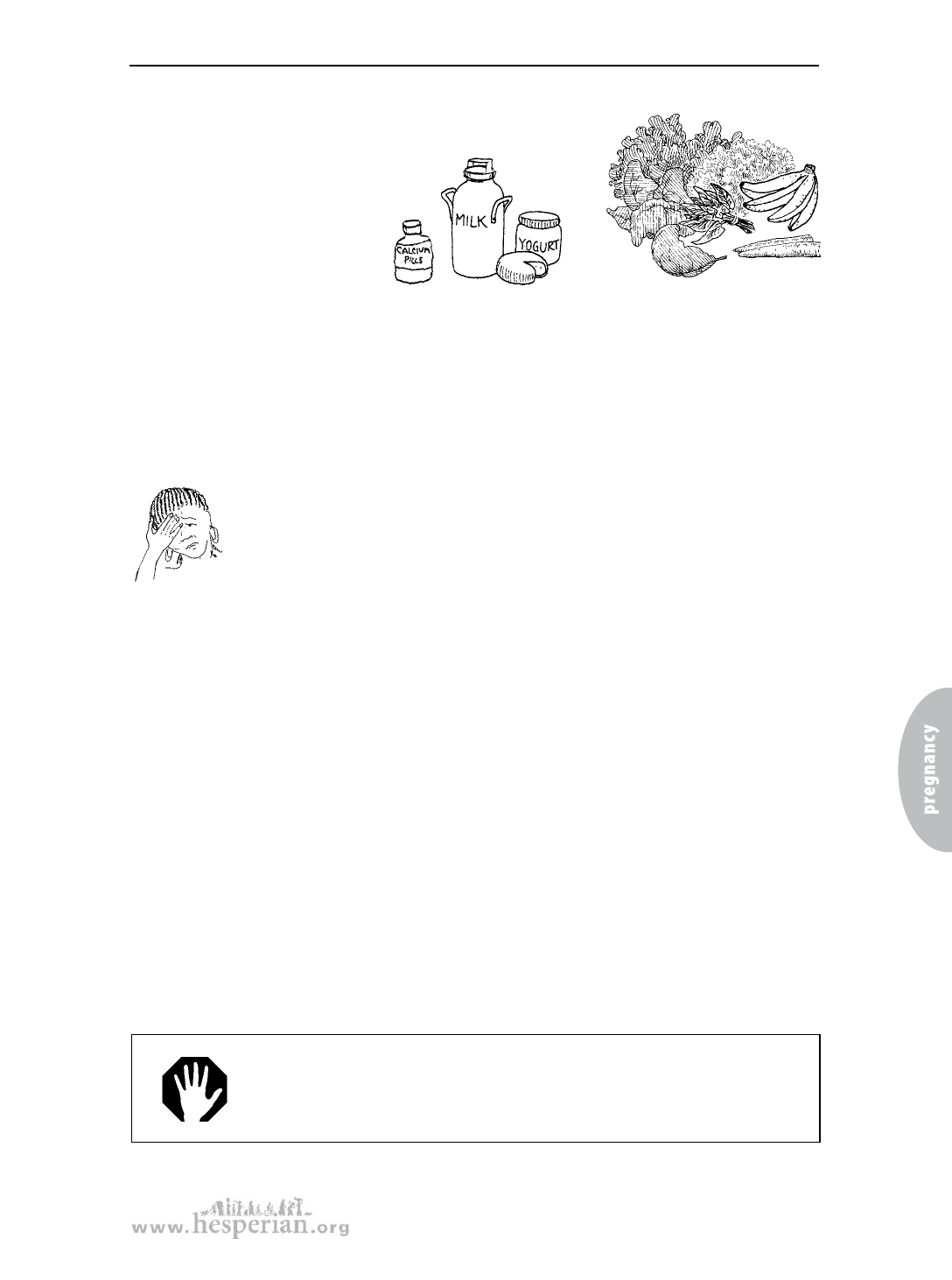
Body changes and discomforts
To prevent more cramps, a woman should not point
her toes (even when stretching), and she should eat
more foods high in calcium and
potassium. The woman can also try
taking calcium, magnesium,
and potassium pills.
Foods rich in calcium and potassium
can help prevent leg cramps.
Headaches
Headaches are common in pregnancy but are usually harmless. Headaches may
stop if the mother rests and relaxes more, drinks more juice or water, or gently
massages her temples. It is OK for a pregnant woman to take 2 paracetamol tablets
with water once in a while.
Some women have migraine headaches. These are strong
headaches, often on the side of the head. The woman may see spots
and feel nauseated. Bright light or sunshine can make them worse.
Migraines may get worse in pregnancy.
Unfortunately, migraine medicine is very dangerous in pregnancy. It can cause
labor to start too soon, and it may also harm the baby. It is better for a pregnant
woman with migraines to take 500 to 1000 milligrams paracetamol, and rest in a
dark room. Although coffee and black tea are usually not healthy in pregnancy,
they are OK occasionally and they may help cure a migraine.
Headaches late in pregnancy are a warning sign of pre-eclampsia, especially
if there is also high blood pressure or swelling of the face or hands. See
page 125.
Other pains
It is common to have other small aches and pains during pregnancy.
Get medical advice for pain that is not normal in pregnancy, such as:
• red, swollen joints.
• severe pain.
• signs of anemia with joint pain (see page 116 on anemia).
WARNING! If there is pain in one leg that will not go away, it
may be a blood clot. See page 273 and get medical help.
A Book for Midwives (2010)
81